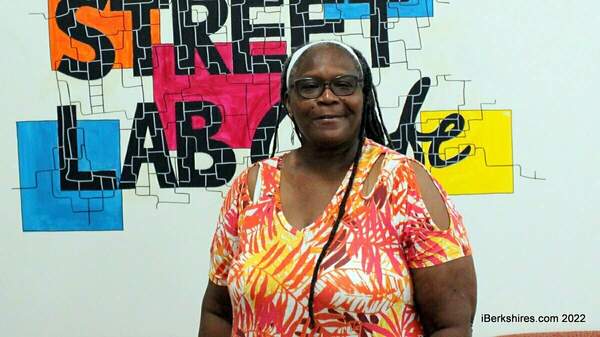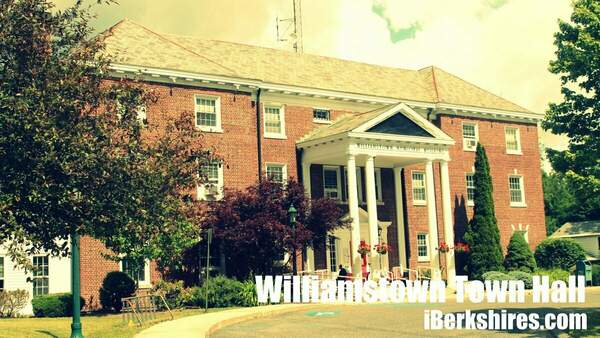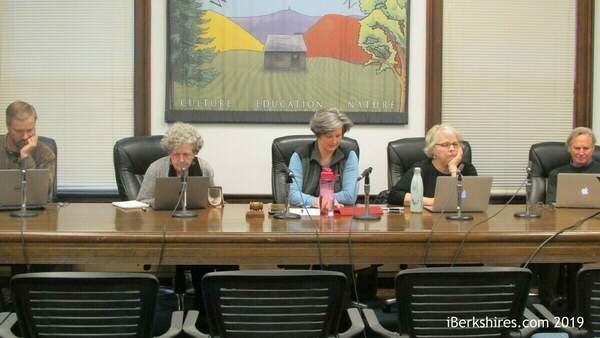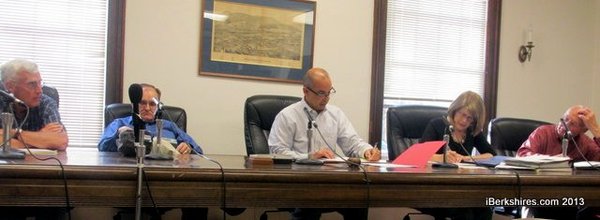
Housing Review Finds Need for Williamstown Elders
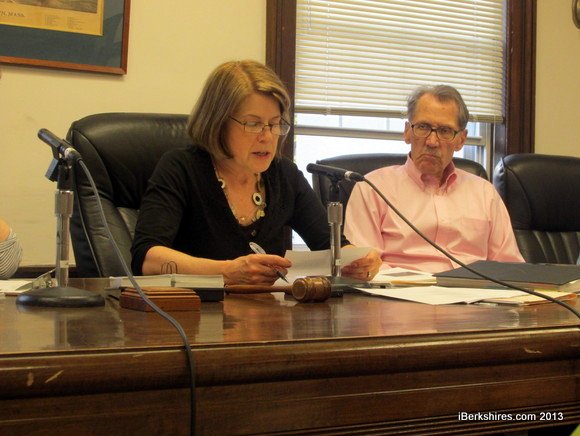 |
WILLIAMSTOWN, Mass. — The consultant hired to assess the town's housing needs presented his final report on Tuesday night, and the problem is as bad as town officials thought — especially when it comes to meeting the needs of older residents.
"The nature of the senior need in Williamstown has changed over time," Montpelier, Vt.,-based consultant John Ryan said. "It is now, I would say, close to exclusively folks who own their home. Typically, they're single individuals, 75 and over, living on fixed incomes in a home that's increasingly difficult to maintain.
"That's happening everywhere, but it's concentrated in Williamstown. You have a population here in their 70s and 80s who have owned their home for a long time ... and will need some help in the next stage of their life.
"I think it's in the range of 200 households of people who would be eligible for senior housing on age and income level who are living their own home by themselves."
Ryan presented his findings to a joint meeting of the town's Affordable Housing Committee and Affordable Housing Trust.
The chairman of the former, who also serves on the latter, said Wednesday morning that Ryan's report is useful, even if the gist was not surprising.
"I think his data confirms what we already knew," Catherine Yamamoto said. "We have a big problem at the Spruces, and there is some number among that population of almost 300 people who used to live there or still live there that we need to house. Some of them will, for a variety of reasons, not be interested in living again in Williamstown, but when you're talking about 225 homes, even if it's a third of those, you're talking about 75 households.
"Where are we going to put 75 households, and what is most appropriate for them?"
Ryan did not have the answer. Instead, his job was to help frame the question.
"I don't feel like it's my job to say what Williamstown should be," Ryan said. "What I did try to say is how it has changed and what are the trends that are happening so you can say, 'Is that what we want?' "
Ryan's full report will be posted on the Affordable Housing Committee's website.
His oral report on Tuesday touched on a number of trends that the town might want to consider as it addresses the affordable housing issue.
Most of his comments concerned the town's fastest growing population, the over-62 residents like those who lived or live in the Spruces.
He pointed out that the loss of the mobile home park in the wake of 2011's Tropical Storm Irene is the most easily recognizable source of need for subsidized housing. Although the owner-occupied units at the park were not subsidized themselves, the loss of the low-cost rental spaces at the park eliminated what was de facto affordable housing — even if it was not "affordable housing" in the strictest sense of the term.
"What happens to them is not necessarily the responsibility of the community," Ryan said. "You can choose to make it so and the degree to which you do. But either way it's hard not to identify that as a need. [The remaining residents] have, essentially, a planned evacuation. It may take three years to happen. The next level of need I'm aware of is the households who had an unplanned evacuation in August 2011."
The "planned evacuation" Ryan referred to is the impending closure of the park if the town takes possession as it is expected to do as part of an agreement with park owner Morgan Management. The town and Morgan sought and were awarded a Federal Emergency Management Agency Hazard Mitigation Grant that will: compensate Morgan for its land, assist the current residents in leaving the park, allow the town to remove the infrastructure at the park (buildings, roads, etc.) and, it is hoped, leave an estimated $3 million to spend on developing replacement housing.
It was obvious again on Tuesday night that the members of the AHC and AHT feel that "what happens" to the Spruces residents is the town's responsibility.
 Housing consultant John Ryan said there are about 200 households that could be eligible for senior housing. Housing consultant John Ryan said there are about 200 households that could be eligible for senior housing. |
"I advocate for always keeping their interests in the front of our minds and, as Stan said, imagining they're in the room during all our discussions," Yamamoto said, referring to trust Chairman Stan Parese. "That money needs to go to meet their needs as best we can.
"I agree with (AHT member and Selectman) Tom (Sheldon). We can't let perfection be the enemy of good, but we need to keep their needs foremost and move as expeditiously as possible."
While Ryan was not specifically charged with finding solutions to Williamstown's housing problem, he did speculate on Tuesday that the solution could involve multifamily dwellings with the capacity to allow residents to transition from independent living to assisted living and beyond.
"There's probably a sufficient level of need in the community to put forward a proposal to build some sort of senior housing," he said.
"There are a variety of models out there. ... The ones I've been thinking of for quite a while have the capacity to add services. Every independent living community in the commonwealth is stressed by people living there who can't live independently anymore. And every assisted living community I've worked with is stressed by people who can't live there any longer. If I was doign something new for seniors, I'd be thinking about where you're going to provide services."
On Wednesday, Yamamoto reiterated her contention that the town's subsidized housing needs require a multifaceted solution. She said that some sort of one-floor homes — whether free standing or duplexes — whould be part of that solution. But any of the senior residences the town develops must have the capacity to add the kinds of services to which Ryan alluded.
"That's certainly what a lot of municipalities and private companies are building," she said. "Residents want to age in place. The desire is there. The hope is we can build that into the design, no matter what we build.
"What [Ryan] was saying is there is definitely a need for elderly housing in Williamstown. That's not only evidenced by the waiting list [for existing housing] but by the fact that so many people are living in single-family homes and paying more than 35 percent of their income to live there."
Ryan also looked at the housing needs of younger populations — a declining demographic in the town of 7,754.
The drop in the number of households with children, "is a trend statewide and nationally, but it's been going down significantly faster in Williamstown than in surrounding communities," Ryan said. "What's surprising to me is in most of the communities I've worked with in the commonwealth ... even when a third of the population is rental, a high percentage of the children in schools are in rentals. That's not true in Williamstown. Almost none of the children are in rental homes.
"That's part of what I see as the gentrification of the town. I was quite shocked by the degree to which the children in schools were children in owner-households."
Part of the decline among non-elderly renters is the disappearance of the manufacturing base, but Ryan noted during his remarks that there are a number of people who commute to Williamstown from outside of town. Many of them work at hotels, restaurants and, of course, the town's largest employer, Williams College.
Another factor: the lack of subsidized rental housing.
"Taken together, all of the commonwealth's communities provide enough subsidized non-elderly housing to house about 20 percent of non-elderly renters earning less than 80 percent of (average median income)," Ryan's executive summary reads. "To match that statewide average, Williamstown would need to provide 72 subsidized rental units; it currently provides 38 units."
Not all the non-elderly population would be served by rental units, and Ryan recommended that the town promote home ownership by promoting participation in the Massachusetts Housing Partnership's SoftSecond Program, a low-down payment, low-interest loan program for first-time homebuyers.
In addition, the town could get involved in buying and rehabilitating existing homes in town and selling them to low- and moderate-income residents with deed restrictions limiting the resale price to keep those homes affordable. That is a model that has worked in many communities in Ryan's home state of Vermont, he said.
"When it comes to housing, one size does not fit all," Yamamoto said on Wednesday. "We need to build in suitability along with affordability. Our goal is to create a variety of housing options, including apartment living where appropriate as well as one-floor living that is not in a high-rise. That will require acreage and there must be a place for that somewhere in Williamstown."
In other business Tuesday night, the Affordable Housing Committee agreed to spend about $6,300 to help pay Westfield engineering firm Tighe & Bond for further study of contaminated land at the town-owned site on Cole Avenue formerly occupied by Photech. The committee hopes to develop at least some of the 10-acre parcel if and when the soil contamination is remediated.
The bulk of the new round of tests will be paid for by the remainder of a state grant. If the tests come back clean, "it could be the end of the story," Yamamoto said.
The Affordable Housing Committee also discussed a possible joint meeting with the town's Conservation Commission at the latter's regularly-scheduled May 23 meeting.
The Affordable Housing Trust on Tuesday voted its advisory positions on four housing-related warrant articles for the May 21 Annual Town Meeting. The trustees voted to recommend approval of the Community Preservation Committee's suggestion that the town designate $200,000 of CPA funds to the trust.
The trust voted to recommend the town not adopt Article 36, a citizen's petition to given town money to a group of Spruces residents to allow them to buy (and preserve) the park. The panel voted to recommend the town take no action on two citizen's petition articles (Nos. 37 and 38), which are repeated from the articles on the April 24 special town meeting, at which the town decided to delay decision on the issues in question.
"I stated on the floor at the special town meeting, and I would recommend we stand by the notion that this entity take a position there should be no action on this at the annual town meeting," Parese said. "There is no desire on this entity's part to derive any procedural advantage by 'standing down.' "
Parese did emphasize that the decision to "stand down" on the Lowry property question is not an excuse to sit still on the issue.
"As someone put it to me, the town has given us the precious commodity of time, and we have to use it well," Parese said.
Tags: affordable housing, affordable housing trust, senior housing,




